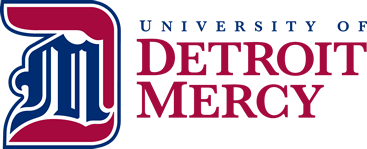President, Electric-Auto-Lite Company
1956
Citation:
This year the Society of Jesus is commemorating the 400th anniversary of the death of its founder, Ignatius of Loyola, courtier, soldier, organizer, educator, ascetic and saint. On March 11 some 100,000 Jesuit alumni in the United States gathered at 140 centers to pay tribute to the memory of this great man. In thousands of other centers around the world, ranging from the great cities of Europe to the mission schools and colleges in pagan lands, grateful and loyal Jesuit graduates joined in this testimonial to genius and sanctity. Four hundred years after Ignatius founded, in six European countries, the first thirty-five Jesuit secondary schools, with a total enrollment of 10,000, his Society is educating in its schools this year more than 500,000 young men and women scattered in practically every commonwealth outside the Communist countries. In the United States alone there are 120,000 students following the Ignatian tradition in forty-one high schools and twenty-eight colleges and universities. This Jesuit tradition in education is dedicated to the making of men and women, not primarily to the making of doctors, lawyers, executives, teachers or even theologians. Jesuit education is not indifferent to the making of specialists, but it believes that a specialist who is not first a mature human being will not be an effective or even a happy specialist. It also believes that in the educating of men and women there is no substitute for literature, history and philosophy. These constitute the core of what is known as the humanities. But literature, history and philosophy do not communicate themselves; they need a dynamic interpreter, a teacher who is a master of his field, who is devoted to the progressive unfolding of the mind and personality of each of his pupils, and who realizes that this individual development goes hand in hand with the ability to form sound, independent judgments, intellectual, ethical and esthetic. This is the ideal that St. Ignatius conceived and formulated for the Jesuit teachers of the Renaissance era. It is the ideal that must inspire Jesuit education today. This Ignatian ideal has in recent times been vigorously reaffirmed by leaders in the world of business, industry and technology. I quote you only one of them. Mr. Irving S. Olds, retired board chairman of the United States Steel Corporation, stated a short time age: The most difficult problems American enterprise faces today are neither scientific nor technical, but lie chiefly in the realm of what is embraced in a liberal arts education." It is a fortunate circumstance that the three alumni whom the University has selected for honorary degrees tonight represent the realization of the twofold objective envisaged in Jesuit education: the liberally educated mind and heart, both as an end in itself and as preparation for the masterly grasp of a chosen profession. James Patrick Falvey, after six years at the university of Detroit high School and College, entered the university's law school from which he graduated in 1927. He was immediately admitted to the Michigan Bar and spent three years in the legal department of the United States Customs. In the succeeding twenty-five years he has progressively exercised his legal talents both in private practice and in the highly specialized fields of patent law, industrial relations, government service and business management. His achievements during this quarter century of fruitful service received deserved recognition last year in this election to the presidency of Electric Auto-Lite Company, the world's largest independent manufacturer of automotive electrical equipment. His distinguished career sheds luster upon his Alma Mater, and for this the University is grateful. It is still more grateful for the time and energy he has devotedly given to every project which the University has undertaken. Reverend President, I have the honor of presenting Mr. James Patrick Falvey for the Honorary Degree of Doctor of Laws. Commencement, University of Detroit, June 14, 1956.



